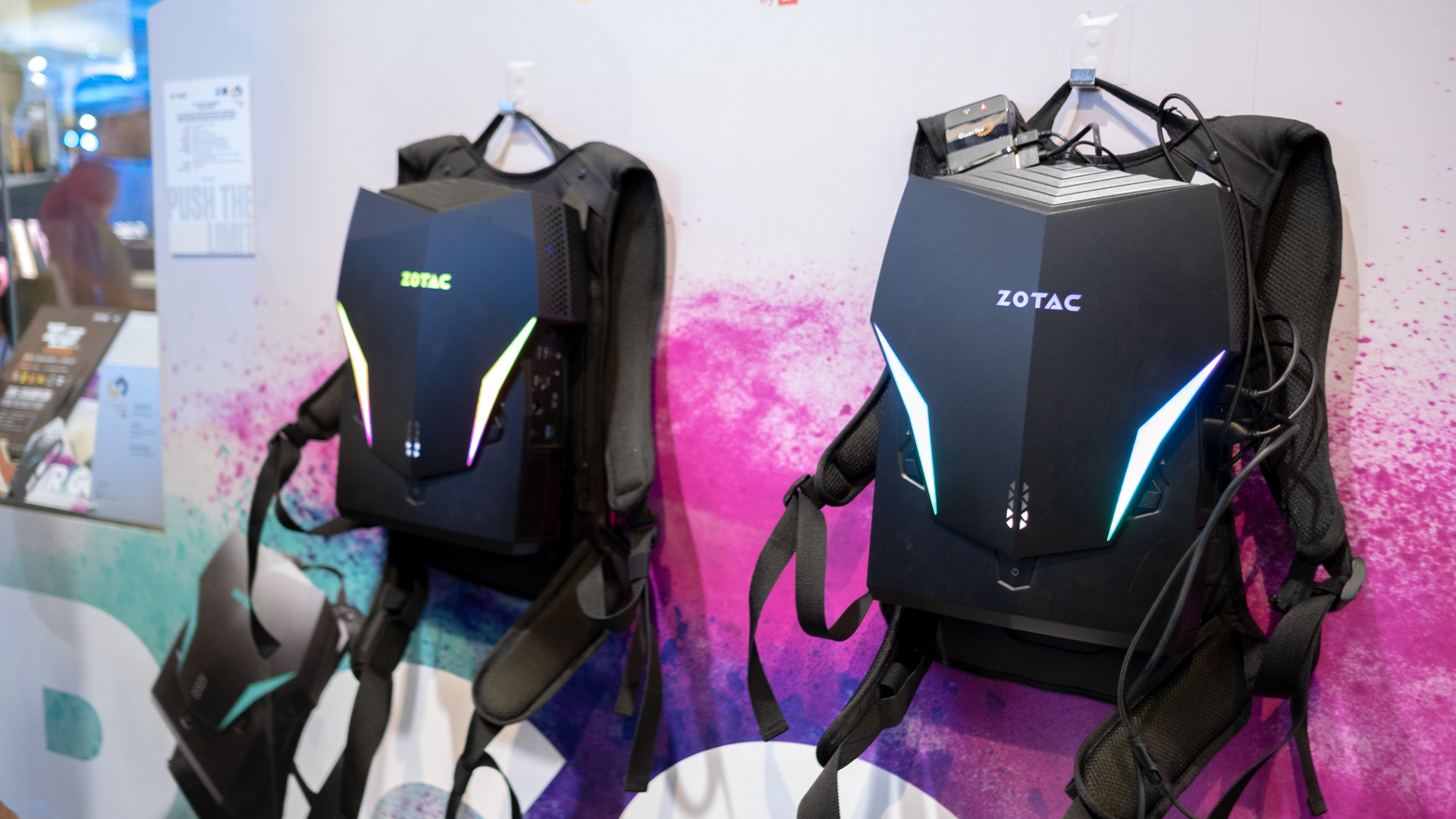Early Verdict
The Zotac VR Go 2.0 takes a big step forward in comfort and power over its predecessor, but its decision to cut battery life by a quarter could hurt it in the long run.
Pros
- +
Smaller and more comfortable to wear
- +
Updated to modern Coffee Lake processors
- +
Plethora of ports
Cons
- -
A quarter less battery life
- -
Same Nvidia GTX 1070 GPU
Why you can trust TechRadar
Zotac was one of the first companies to put VR backpack PCs on the map and now at Computex 2018 it has come out with a smaller, more powerful and RGB-lit version with the Zotac VR Go 2.0.
Equipped with brand new Intel Coffee Lake T-series processors and a high-end Nvidia GPU, this portable gaming PC delivers enough power to drive even the demanding HTC Vive Pro virtual reality headset.
Pricing and availability
At the time of writing, Zotac was not ready to disclose pricing of the VR Go 2.0, but it does expect its next VR backpack PC to be available in the late third-quarter or early fourth-quarter of the year.
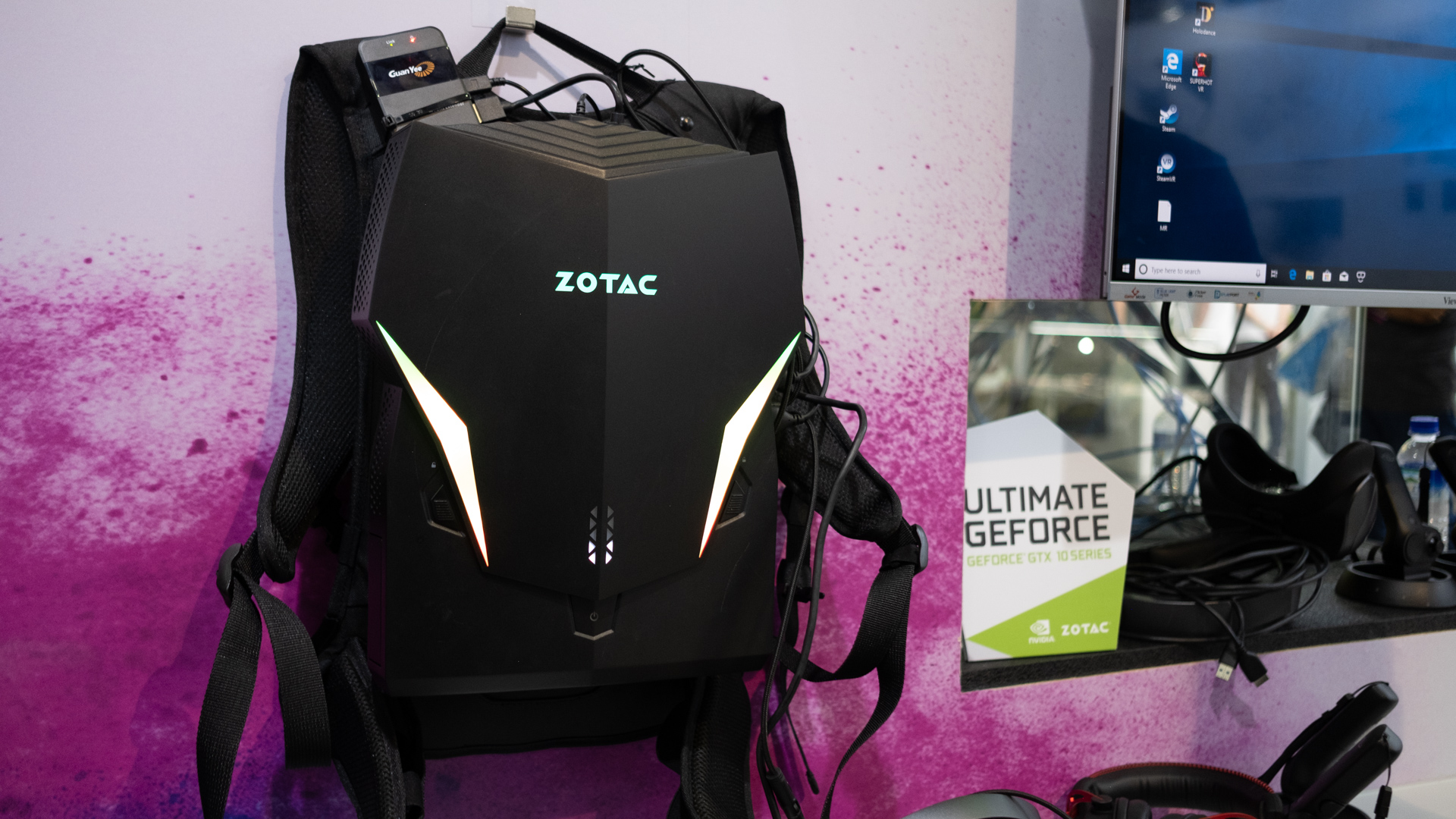
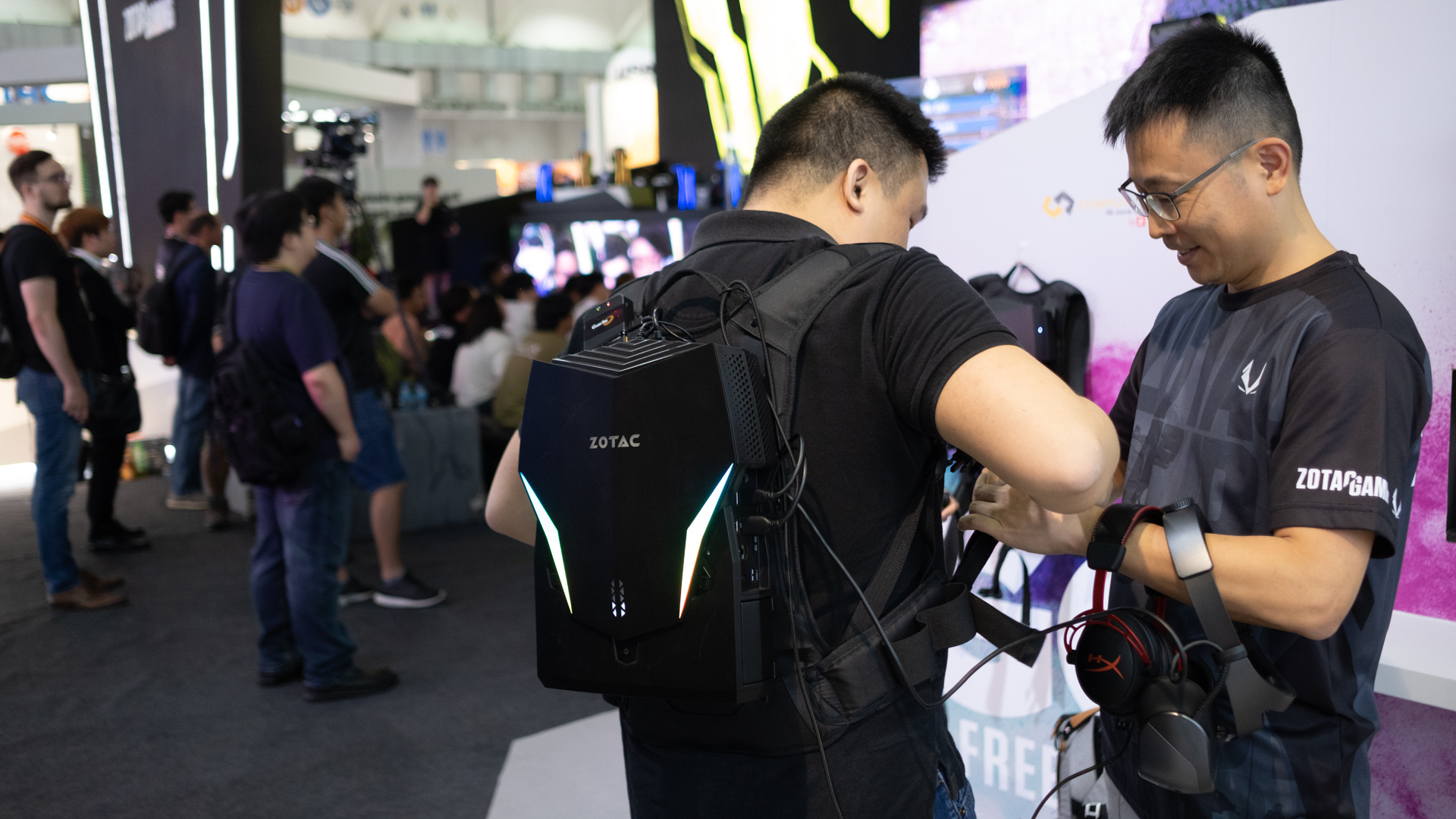
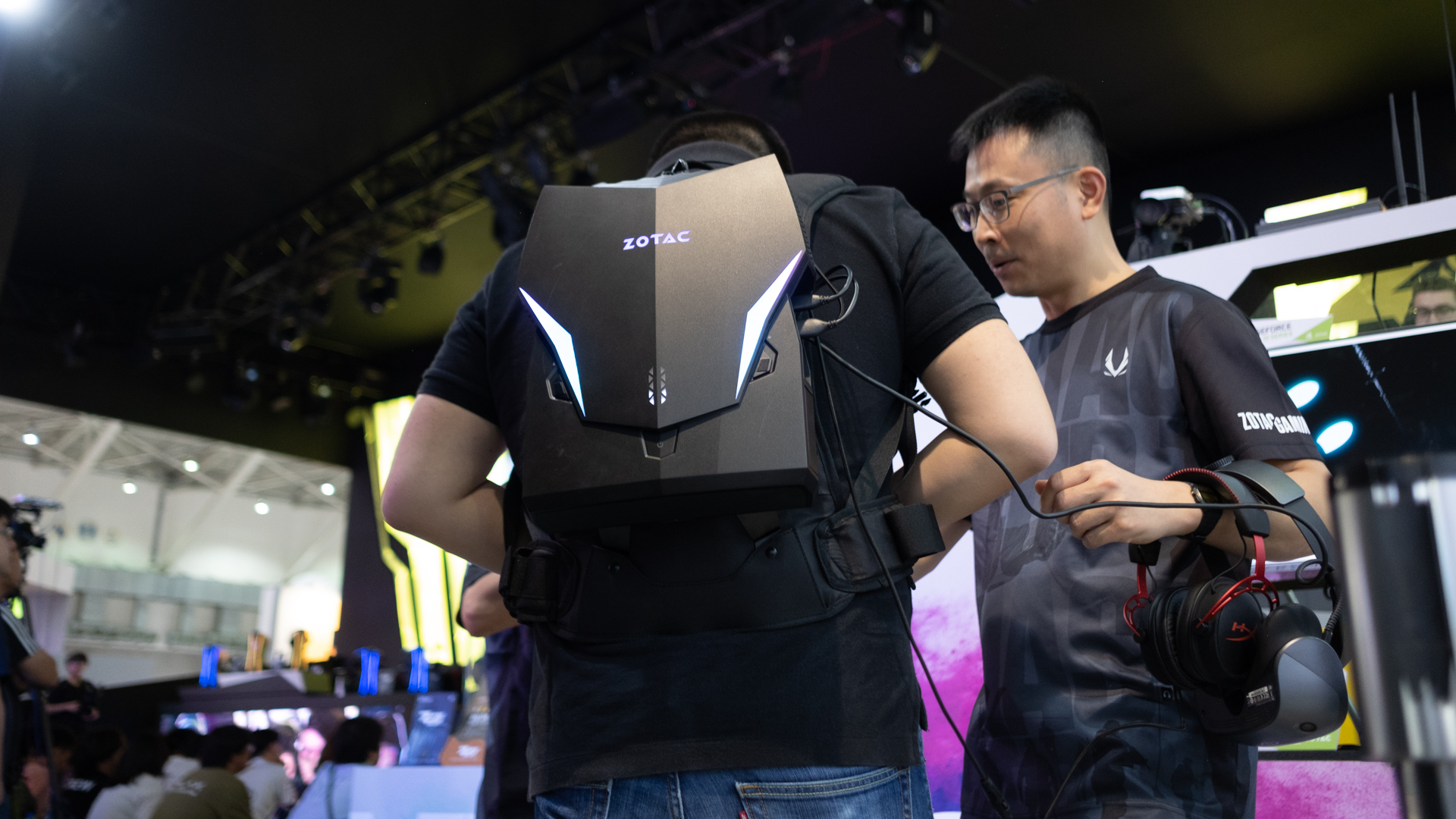
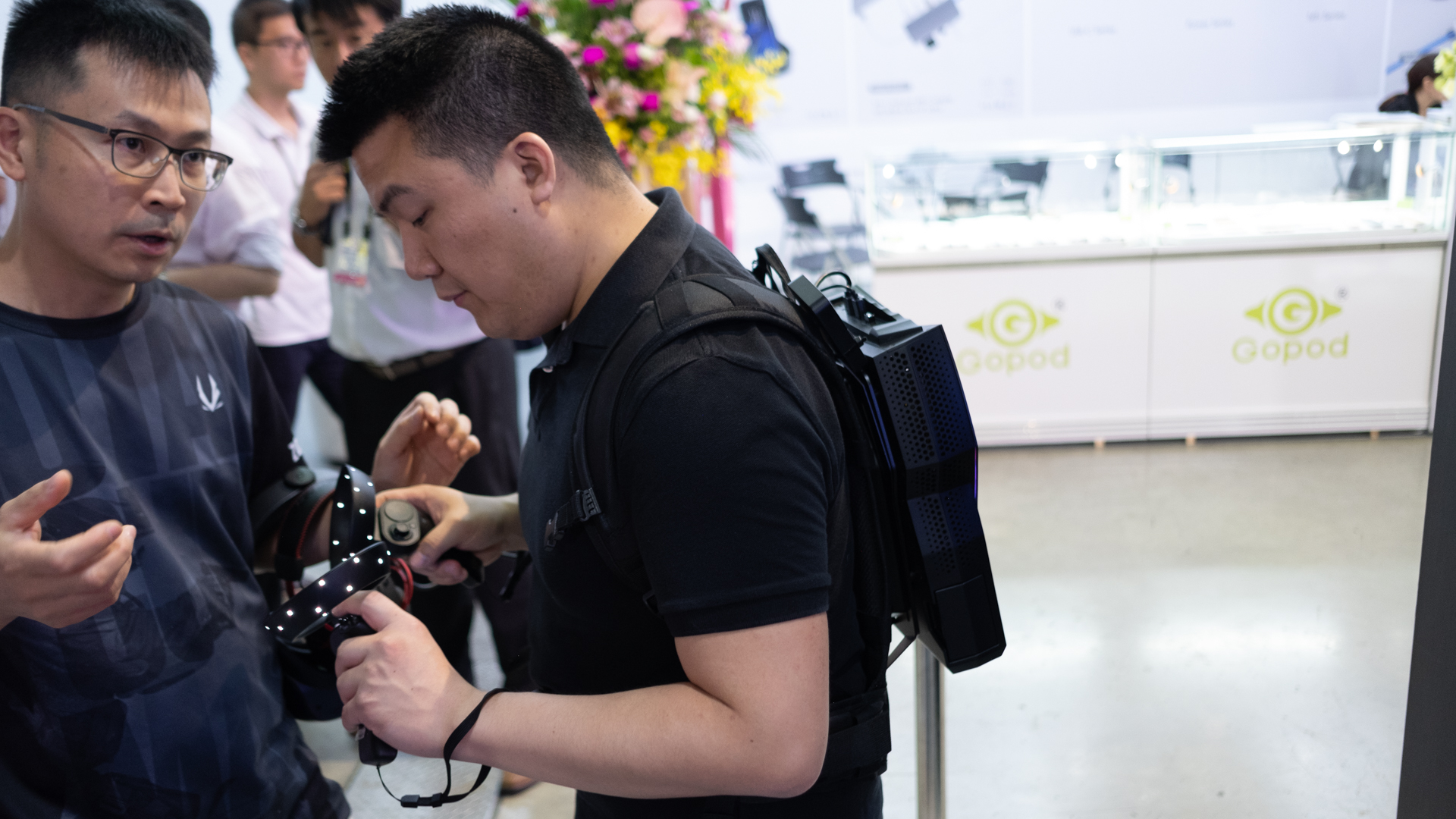

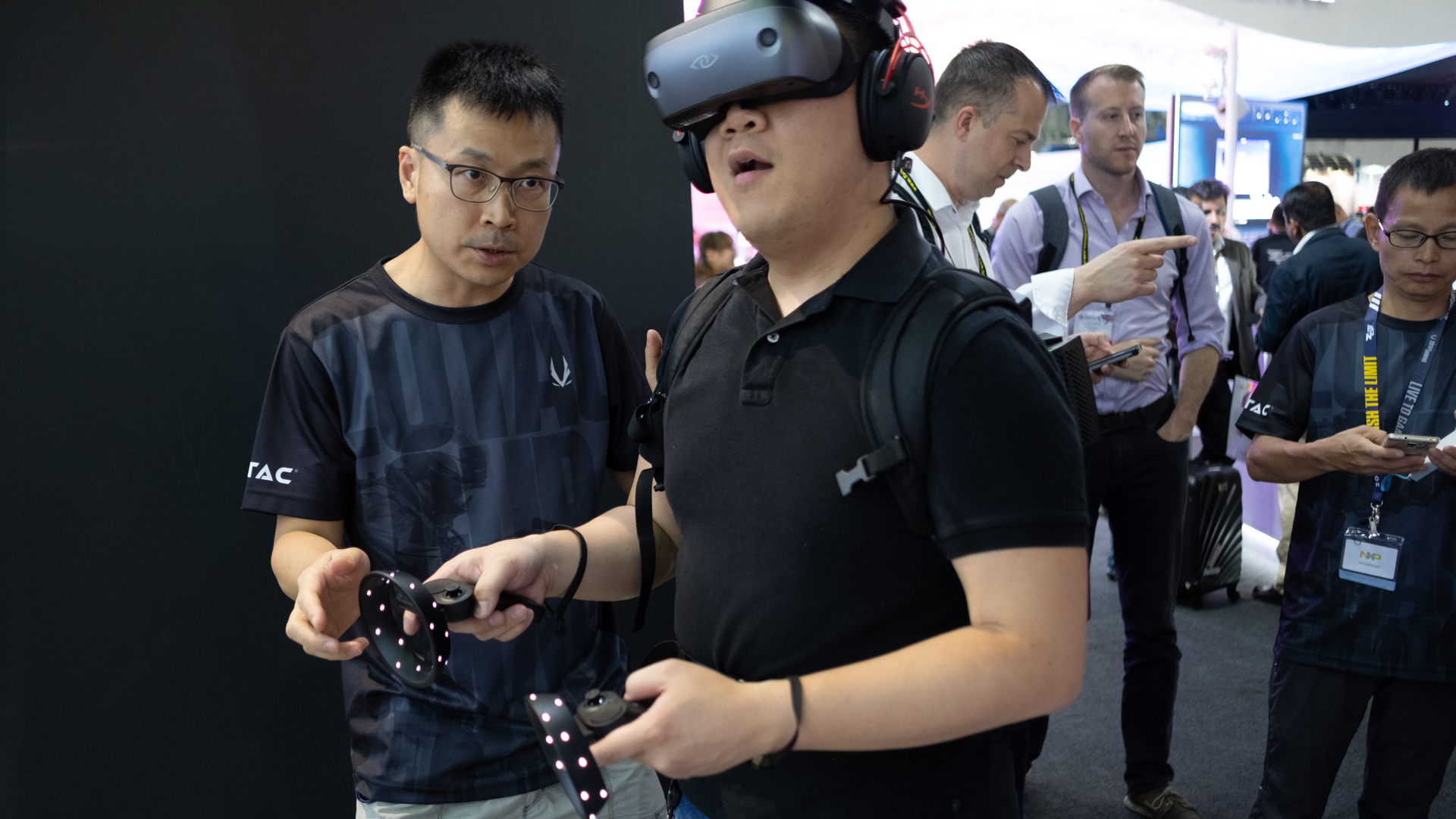
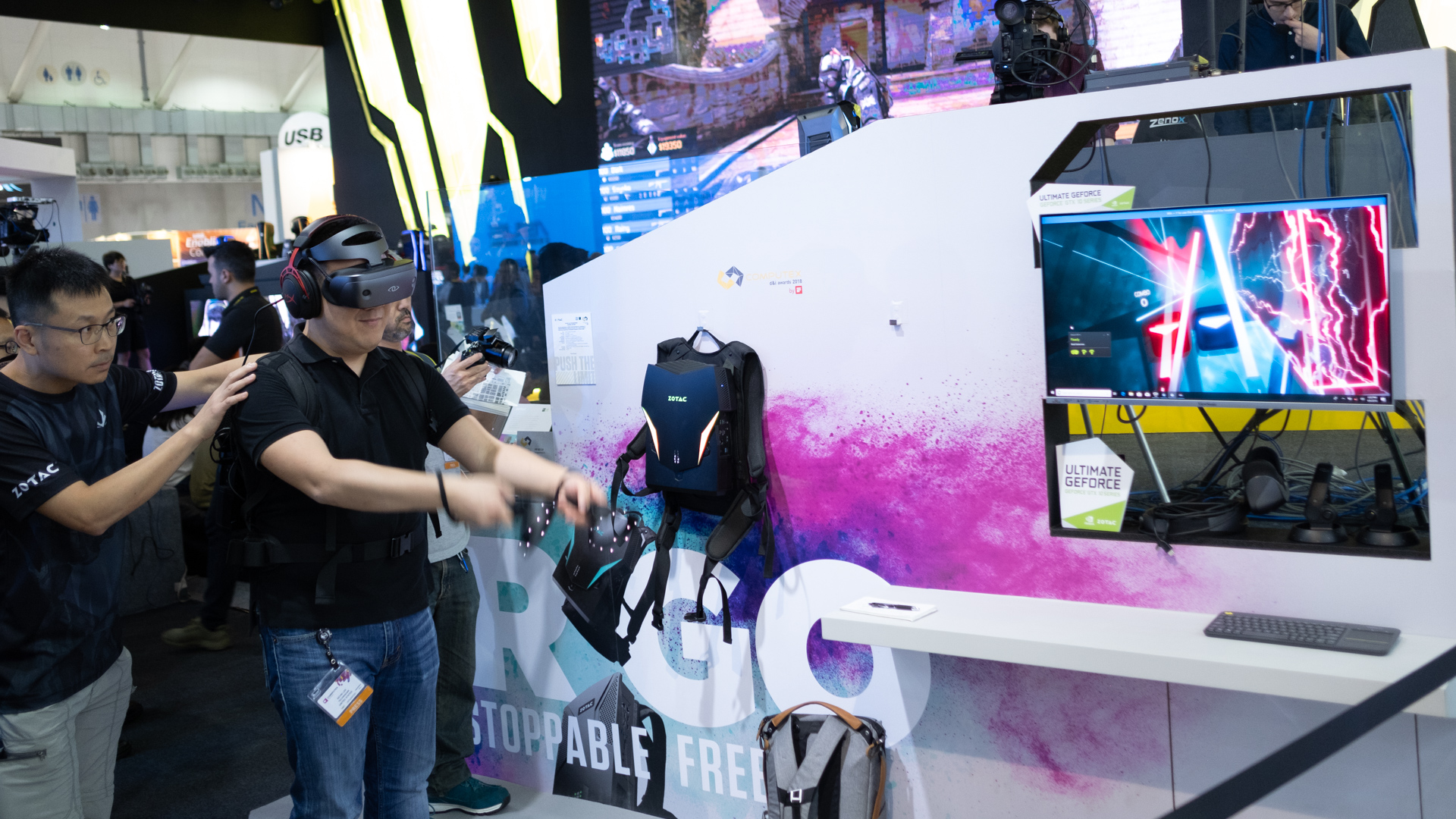
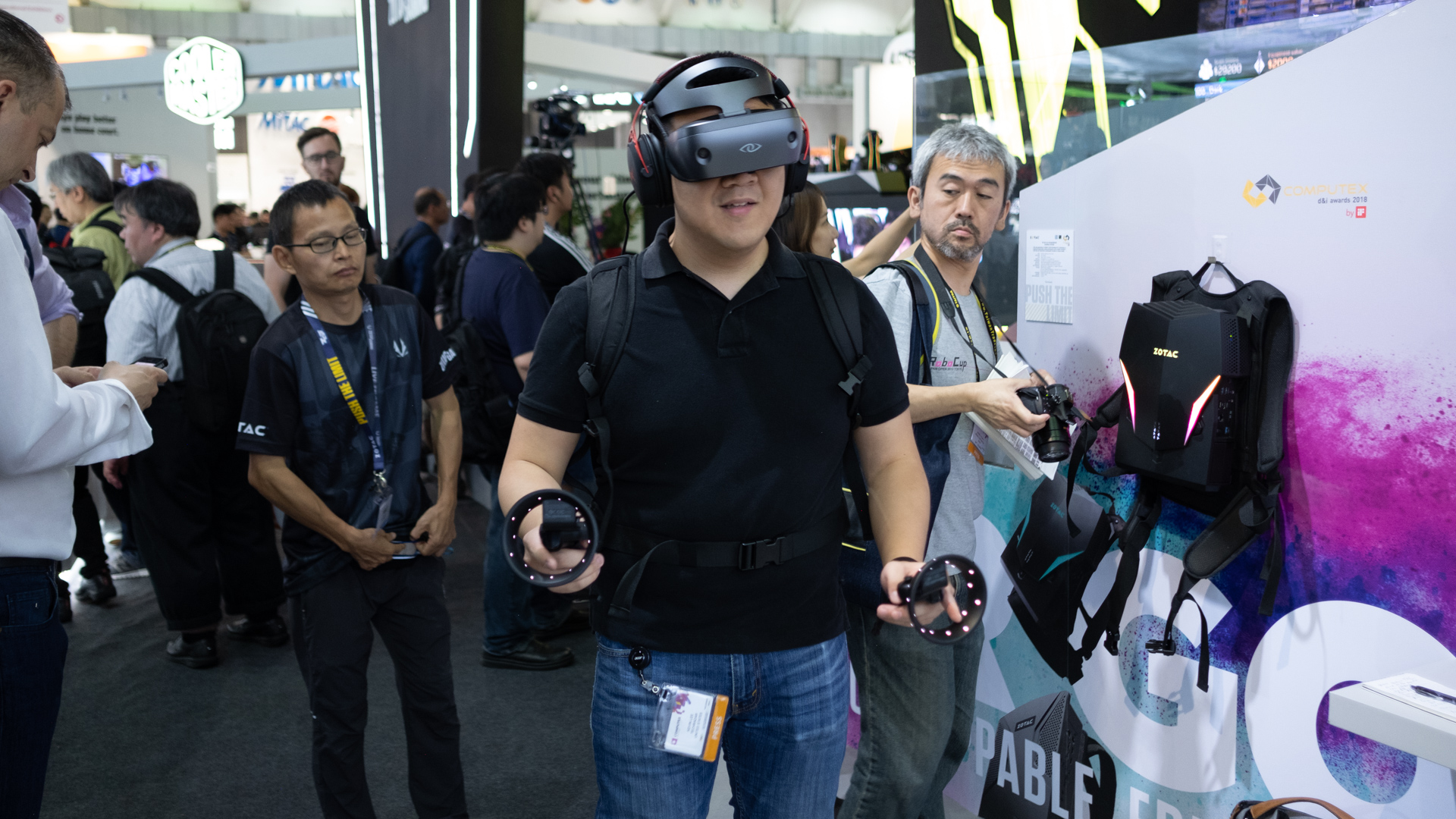


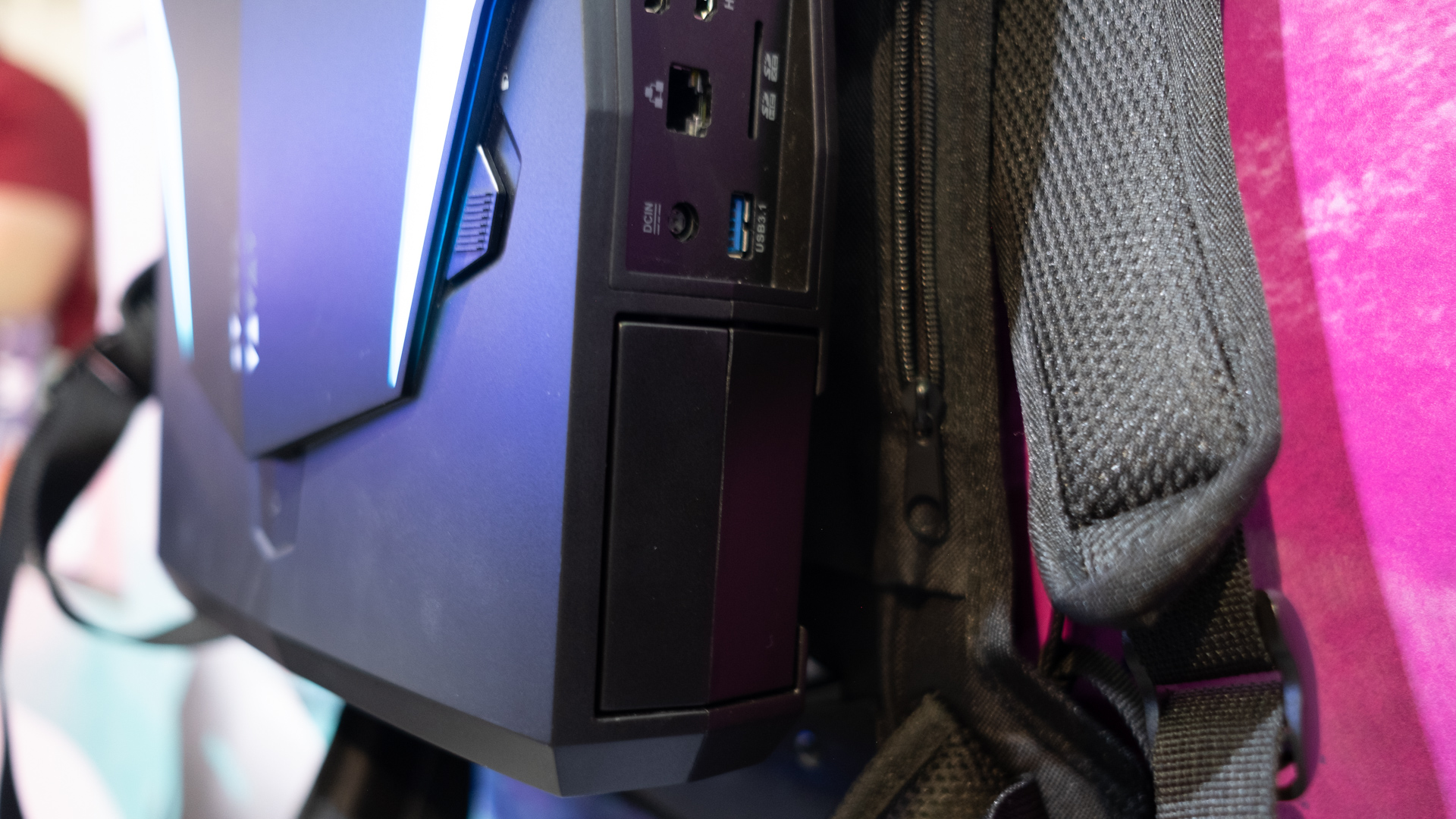

Design
Whereas the original Zotac VR Go felt like wearing a suitcase on our backs, the VR Go 2.0 is more like wearing a futuristic rocket pack. Basically, what we're saying is that it’s really cool.
The Zotac VR Go 2.0 is considerably shorter than the previous edition, and it rides higher on your back. This way it never lodges itself in the small of your back or up against your posterior.
Plus, Zotac has widened the gap between the PC and your back, which has two benefits. It gives the machine more room to breathe, and prevents you from getting sweaty too quickly.
Visually, the VR Go 2.0 has a more geometric shape and sleek design to match its smaller proportions. As with any good modern gaming device, this VR backpack PC has seen a fresh injection of RGB lights, with a new light up logo and two shard-shaped strips running parallel with its angled sides.
Sign up for breaking news, reviews, opinion, top tech deals, and more.
The VR Go 2.0 also includes two full sets of ports –including multiple USB 3.0 ports and HDMI along its top and right sides. It’s incredible that something this compact has more ports than some full-size desktops.

Specs and performance
The VR Go 2.0 that we tested briefly on the Computex 2018 show floor was fitted with an 8th gen Coffee Lake Intel Core i7-8700T processor, which is a big jump from the Skylake Intel Core i7-6700T found in its predecessor. Graphical power, however, has stayed the same with an Nvidia GTX 1070 GPU, but it delivered more than enough performance for us to play the Beat Saber game on a Windows Mixed Reality headset.
Without a dangling cable or needing lighthouses to orient ourselves, we moved more freely in the virtual space than ever before – in fact, we moved so quickly that a booth attendant had to stop us from stepping back into the crowd.
According to HTC’s updated recommended specs to run the Vive Pro, this newest portable VR rig will just manage to make the grade with its GPU. Of course, we’ll have to do some more testing in-house to see how well it copes.

While the processing power has gone up with this revision, battery life has been cut from two hours to 1.5 hours. Zotac decided to reduce the VR Go 2.0's total weight by giving it two smaller 6,000mAh batteries smaller batteries, but as a consequence the lighter energy cells ultimately mean a shorter playtime.
To counter the issue, Zotac says it has made the batteries easier to hot swap, but then you’re running up a bigger bill to pick up those extra spare batteries. Also, while you might imagine turning off the RGB lighting might dramatically improve battery life, Zotac tells us that isn't actually the case, as most of the energy draw comes from powering the core components.
We’re not sure if this is a great compromise for everyone. We hope that Zotac might make extended batteries available in the future for those who don’t mind the weight and want to extend their play time.

Early verdict
The Zotac VR Go 2.0 takes a big step forward in comfort and power over its predecessor. We’re not exaggerating when we say this updated VR backpack PC feels 10 times more comfortable than its predecessor. Plus the updated processor means this rig will be able to better keep up with future virtual reality headsets and games.
However, the decision to cut down on the battery life could ruin your experience in the long run. Without pricing or availability information just yet, we also can’t say whether it’s sometime regular consumers should be considering. As with the original Zotac VR Go, this 2.0 revision might be better served for entertainment businesses.
- Here's all the news from Computex 2018

Kevin Lee was a former computing reporter at TechRadar. Kevin is now the SEO Updates Editor at IGN based in New York. He handles all of the best of tech buying guides while also dipping his hand in the entertainment and games evergreen content. Kevin has over eight years of experience in the tech and games publications with previous bylines at Polygon, PC World, and more. Outside of work, Kevin is major movie buff of cult and bad films. He also regularly plays flight & space sim and racing games. IRL he's a fan of archery, axe throwing, and board games.
What is a hands on review?
Hands on reviews' are a journalist's first impressions of a piece of kit based on spending some time with it. It may be just a few moments, or a few hours. The important thing is we have been able to play with it ourselves and can give you some sense of what it's like to use, even if it's only an embryonic view. For more information, see TechRadar's Reviews Guarantee.
